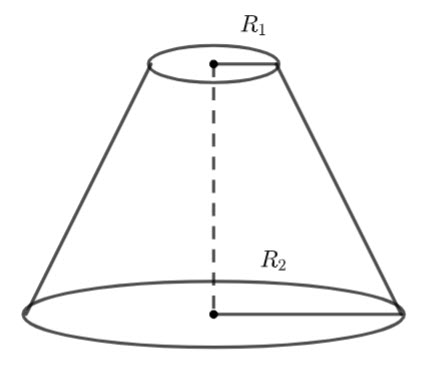
We have a truncated cone,

(1) ![]()
We are unlikely to know ![]() . Can we get
. Can we get ![]() in terms that we do know (i.e.
in terms that we do know (i.e. ![]() )?
)?
Think of similar triangles

![]()
![]()
![]() (Corresponding Angles in Parallel Lines)
(Corresponding Angles in Parallel Lines)
![]() (Corresponding Angles in Parallel Lines)
(Corresponding Angles in Parallel Lines)
Therefore
![]()
Rearrange to make ![]() the subject.
the subject.
![]()
Substitute into equation ![]()
![]()
![]()
![]()
![]()
![]()
![]()
![]()
Now let’s think about the surface area.
The surface area of a cone is ![]() where
where ![]() is the slant height of the cone.
is the slant height of the cone.
Once again, we need to subtract the ‘missing’ part of the cone.

(2) ![]()
We don’t need to subtract the circle of the top cone because it is the top of the frustrum, but we do need to add it on.
Using similar triangles again
![]()
![]()
Substitute into equation ![]()
![]()
![]()
![]()
![]()
And hence the curved surface area is ![]() .
.
